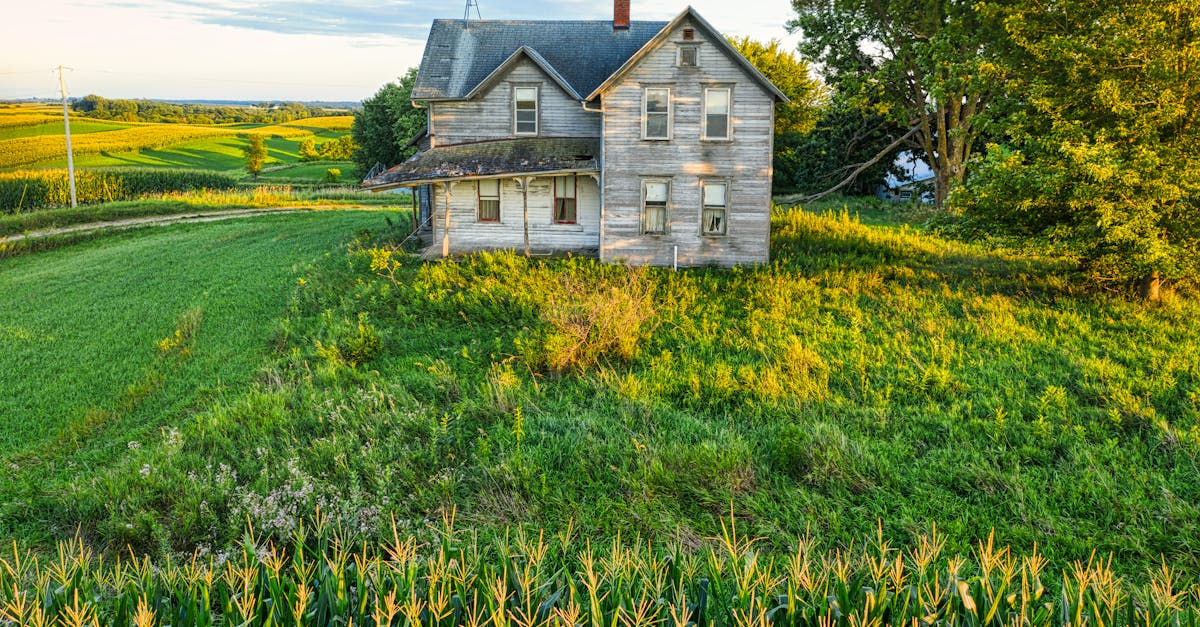Best Pennsylvania Flood Insurance for Riverfront Homes (2025 Rates & Quotes)

Key Takeaways
- The average cost of flood insurance for Pennsylvania riverfront homes in 2025 is about $1,250 per year, but premiums can be higher along flood-prone rivers like the Susquehanna.
- Flood zone classification, elevation certificate data, and your property’s proximity to major waterways are key factors that affect your flood insurance premium in Pennsylvania.
- Comparing flood insurance quotes from both NFIP and private insurers is the fastest way to find the best coverage and save money on your Pennsylvania riverfront home policy.
- Providers like FEMA’s NFIP and select private insurers now offer customized flood policies, so getting a personalized quote can help you maximize your protection and savings.
How Much Will Flood Insurance Cost for Pennsylvania Riverfront Homes in 2025?
If you own a riverfront home in Pennsylvania, flood insurance premiums continue to climb—in 2025, the average annual cost for coverage is about $1,250. Homes near volatile waterways like the Susquehanna River often see even higher rates. With new Risk Rating 2.0 rules and the increasing frequency of severe weather, it’s never been more important to secure the right coverage and avoid both gaps and overpayment.
Our expert analysis demystifies Pennsylvania flood insurance for riverfront properties in 2025. Understand exactly what drives your premium, how to compare NFIP and private market policies, and discover the critical factors—flood zone, elevation certificates, and proximity to major rivers—that determine your options for comprehensive and affordable coverage.
You’ll see how to select the best provider for your needs, learn about key regulatory updates, and receive a step-by-step guide to getting precise quotes tailored to your Susquehanna or Delaware riverfront home. Protect your most valuable asset without overpaying.
How Much Does Flood Insurance Cost for Pennsylvania Riverfront Homes in 2025?
Flood insurance costs for riverfront homes in Pennsylvania vary based on location, risk level, and policy type. As of 2025, the average flood insurance premium for Pennsylvania riverfront homes is $1,250 per year. Properties directly on the banks of the Susquehanna or Delaware Rivers often pay higher rates due to documented flood frequency and FEMA’s updated Risk Rating 2.0.
The closer your home is to a major waterway, especially in Special Flood Hazard Areas (such as zones A or AE), the higher your rates will climb. Homes farther inland can pay less than half of what waterfront owners are charged.
If you’re coping with high riverfront premiums, it is essential to compare policy costs and check for discounts like elevated construction or mitigation measures. Next, explore how average rates compare by city and river proximity in Pennsylvania.
To explore similar challenges in other regions, check our analyst review of Compare Winnipeg Flood Insurance Rates for 2025 Cheapest Manitoba Coverage.
What Are Average Flood Insurance Rates by Pennsylvania City and River Proximity in 2025?
Location remains the most powerful driver of flood insurance cost for Pennsylvania homes. Properties on or near riverbanks—especially under FEMA’s Risk Rating 2.0—face noticeably higher premiums. The following table summarizes estimated 2025 annual premium ranges for riverfront properties in key Pennsylvania cities, by proximity to the Susquehanna or Delaware Rivers:
| City | Riverfront (<200 yds) | Near River (200–500 yds) | Non-River Zone (>0.5 mi) |
|---|---|---|---|
| Harrisburg | $2,100 | $1,600 | $950 |
| Wilkes-Barre | $1,750 | $1,250 | $800 |
| Easton | $1,620 | $1,200 | $750 |
| Marietta | $1,980 | $1,450 | $900 |
| Yardley | $2,050 | $1,520 | $940 |
Your premium isn’t determined by distance alone. Elevation, home construction, flood zone, and prior losses all influence your rate. Always provide thorough documentation and compare multiple insurers to unlock the biggest savings. Let’s look at which key factors most impact your individual flood costs as a Pennsylvania riverfront homeowner.
What Factors Most Affect Flood Insurance Premiums for Riverfront Homes in Pennsylvania?
Several factors combine to shape the flood insurance rates Pennsylvania riverfront homeowners pay. Understanding each variable can help you find opportunities to save and avoid costly surprises.
Flood Zone Classification and Floodplain Maps
Flood zones—designated by FEMA—define your home’s risk based on its statistical chance of flooding. Zones A, AE, AO, and VE are considered “high risk,” with at least a 1% chance of flooding annually. Most riverfront homes along the Susquehanna or Delaware fall into these mandatory-insurance zones, and lenders will almost always require proof of adequate flood coverage. Conversely, homes in moderate- or low-risk flood zones (such as zone X) pay significantly less.
Proximity to Major Rivers in Pennsylvania
Insurers factor your precise distance from major waterways like the Susquehanna, Delaware, and Allegheny into base rates. The closer your home is to the river, the greater your baseline risk, particularly if elevation is low. Waterfront properties in Zones A or AE pay the steepest premiums, while homes farther from rivers or at higher elevations are less costly to insure.
Impact of FEMA’s Risk Rating 2.0 on PA Riverfront Properties
Risk Rating 2.0 revamped the way FEMA calculates premiums, with advanced models using local data like rainfall, river height, foundation elevation, property value, and claims history. For many Pennsylvania riverfront homeowners, this has resulted in higher premiums—especially for older, lower-elevation homes—or modest decreases for newer construction above the floodplain.
The Power of Elevation Certificate Data
An elevation certificate specifies your home’s height relative to FEMA’s base flood elevation. Submitting this document to your insurer can dramatically cut your rate if your home is built above the floodplain—sometimes saving hundreds per year. Both NFIP and private providers use this data to determine final pricing.
Home Age, Construction, and Flood Loss History
Older homes lacking retrofitting or those built before tighter flood codes tend to pay higher premiums. Properties with prior flood claims are also subject to increased rates. Newer construction with robust floodproofing and no claims history can qualify for discounts.
If these factors are raising your costs, see how other high-risk regions compare in Tennessee Floodplain Insurance Compare Cheap River Home Coverage 2025.
By understanding these variables, you can take steps like obtaining an elevation certificate, elevating essential utilities, or choosing higher deductibles to reduce your riverfront insurance premium in Pennsylvania. Now, compare your provider options for the best fit.
What Are the Best Flood Insurance Options for Pennsylvania Riverfront Homes?
Homeowners along Pennsylvania’s rivers can choose between government-backed NFIP coverage or private flood insurance carriers. Each has distinctive advantages based on your home’s risk profile, location, and financial needs.
NFIP (National Flood Insurance Program)
Managed by FEMA, the NFIP supplies most Pennsylvania flood insurance policies. Standard coverage includes up to $250,000 for the building and $100,000 for contents. Policies feature set waiting periods—usually 30 days—and rates are calculated from FEMA’s flood maps and tables.
- Strengths: Widely accepted by lenders, backed by U.S. government, consistent pricing regardless of your insurer.
- Limitations: Lower maximum limits, limited contents coverage, usually excludes living expense coverage, and little room for tailored policies.
Private Flood Insurance Providers (Lloyd’s of London, Neptune, TypTap, and More)
Private insurers, such as Lloyd’s of London, Neptune, TypTap, and Wright Flood, have expanded their offerings in Pennsylvania. Many can insure buildings up to $1,000,000 or more, insure higher personal contents, and waive the 30-day waiting period for new purchases or loan closings.
- Strengths: Larger policy limits, flexible deductibles, often include living expenses and basements, and faster coverage for new homes or loans.
- Limitations: Not all mortgage lenders accept private policies (though most do), and pricing varies by provider and your own risk profile.
What’s Covered: Comparing NFIP and Private Flood Policies
| Coverage Area | NFIP Standard Policy | Private Flood (Typical) |
|---|---|---|
| Building Limit | $250,000 | Up to $1,000,000+ |
| Contents Limit | $100,000 | $250,000–$500,000 |
| Additional Living Expense | Not Covered | Often Included |
| Pools/fencing/garages | Limited | Often Included |
| Basement Contents | Restricted | Sometimes Covered |
| Shorter Waiting Period | No | Often Yes |
- NFIP Pros: Government security, universal lender acceptance, consistent availability statewide.
- NFIP Cons: Lower coverage caps, lengthy waiting period, limited customization, fewer covered property types.
- Private Pros: Higher policy caps, more flexible deductibles and endorsements, often includes living expenses and unique property features, faster activation.
- Private Cons: Not always available in every ZIP code, lender acceptance may require pre-approval, pricing and eligibility subject to risk underwriting.
After weighing these pros and cons, always collect personalized quotes from both the NFIP and at least two leading private carriers to secure the best protection and value. See below for the top-rated options insuring Pennsylvania’s riverfront homes in 2025.
Who Are the Top Flood Insurance Companies in Pennsylvania for Riverfront Homes (2025)?
The most effective way to lower your flood insurance premium and improve your coverage is to compare rates from several trusted providers. Here are Pennsylvania’s top carriers for 2025, all serving residential properties along the Susquehanna and Delaware Rivers:
1. FEMA’s NFIP
- Strength: Universal lender acceptance, consistency, reliable claims, and the standard for flood coverage across Pennsylvania.
- Best for: High-risk properties needing guaranteed renewal or with extensive claim history.
2. Neptune Flood
- Strength: Digital application, quotes in minutes, coverage up to $4 million, and additional discounts for well-elevated homes.
- Best for: Newer builds above floodplain, buyers wanting quick approval.
3. Wright Flood
- Strength: Largest NFIP administrator, strong expertise with complex riverfront properties, robust client advocacy.
- Best for: Owners needing help securing elevation certificates or mitigating prior losses.
4. TypTap Flood
- Strength: Streamlined digital process, flexible coverage and add-ons, many high-risk ZIP codes eligible.
- Best for: Buyers needing fast approval for new loans or cash buyers in flood zones.
5. Lloyd’s of London (via local agents)
- Strength: Custom underwriting for high-value, historic, or complex properties; capacity for large limits.
- Best for: Unique construction, prior flood loss or homes valued well above NFIP caps.
| Provider | Typical Annual Premium (Riverfront, 2025) | Max Building Limit | Waiting Period |
|---|---|---|---|
| FEMA/NFIP | $1,600–$2,500 | $250,000 | 30 days |
| Neptune Flood | $1,400–$2,300 | $4,000,000 | 10–14 days (often 1 day for loans) |
| Wright Flood | $1,500–$2,600 | $250,000 (NFIP) | 30 days |
| TypTap Flood | $1,250–$2,100 | $1,500,000 | As little as 7 days |
| Lloyd’s of London | $1,700–$3,200 | No cap (custom) | Depends on agency |
Keep in mind these sample rates are statewide averages. For an accurate price, you need to compare customized quotes from several top insurers. The right choice can save you hundreds each year and provide coverage specific to your home’s unique profile. Ready to compare? See our step-by-step process below.
How Can You Compare Flood Insurance Quotes for Your Pennsylvania Riverfront Home?
Securing the best flood insurance starts with a careful side-by-side quote comparison. Here’s an expert-backed approach for Pennsylvania riverfront homeowners:
- Gather property and elevation certificate details: Prepare your address, year built, specifics of your home’s construction, and current elevation certificate data if available.
- Pinpoint your flood zone and river distance: Use FEMA’s map tool or ask our team to identify your flood zone (A, AE, X) and measure your home’s proximity to major rivers.
- Get quotes from both NFIP and private insurers: Request pricing from the NFIP, plus at least two private providers such as Neptune, TypTap, or Lloyd’s brokers servicing your area.
- Examine coverage levels, limits, and deductibles: Compare not only price, but the amount covered for buildings, contents, basement items, and any extra living expense or add-ons. Choose a deductible that fits your budget and risk tolerance.
- Review waiting periods, claims handling, and provider reviews: Some private carriers offer near-immediate coverage or superior claim service—an important consideration for riverfront owners.
- Use a digital comparison tool for efficiency: Our platform delivers instant, side-by-side rates from PA’s leading carriers, tailored to your address and coverage needs.
Get started now by comparing custom flood insurance Pennsylvania quotes for your riverfront home address, and see side-by-side costs and coverage options in less than five minutes. Below, find answers to the most common flood insurance questions from PA riverfront homeowners.
Frequently Asked Questions About Pennsylvania Riverfront Flood Insurance
Is flood insurance mandatory for riverfront homes in Pennsylvania?
Yes, if your property is in a FEMA-designated Special Flood Hazard Area (zones A, AE, AO, or VE) and you have a federally backed mortgage, flood insurance is required by law. Most homes within 200–500 yards of Pennsylvania’s major rivers fall into these regulated areas.
How does Risk Rating 2.0 change my flood insurance premium in PA?
FEMA’s Risk Rating 2.0 uses advanced data to set flood premiums based on your home’s distance from water, elevation, rebuild value, and history of claims. In 2025, riverfront properties with lower elevation or prior flood damage are seeing noticeable premium increases, while properties that are elevated or newly built may pay less.
What exactly does flood insurance cover in Pennsylvania?
A standard flood policy covers direct physical damage to your building and foundation, electrical and mechanical systems, appliances, and most personal property. It does not cover landscaping, outdoor facilities, vehicles, temporary living expenses (if you’re with the NFIP), or most basement property unless your private policy specifically extends this coverage.
Can I switch from NFIP to private flood insurance for my PA riverfront property?
Yes, at renewal you are permitted to change from NFIP to private flood insurance, provided your mortgage lender accepts the new provider’s policy. Always compare premiums and covered features to make sure switching gives you the anticipated benefits.
How quickly does my flood insurance go into effect in Pennsylvania?
NFIP policies usually have a 30-day waiting period unless you are purchasing as a result of a mortgage closing. Many private policies activate coverage in just 7–14 days—or as quickly as one day for newly financed purchases.
Does standard Pennsylvania homeowners insurance cover river flood damage?
No, standard homeowners insurance never includes coverage for flooding caused by overflowing rivers or surface water. Only a separate flood insurance policy—NFIP or private—protects against these specific threats.
What if my riverfront property has a previous flood loss?
Previous flood claims almost always result in higher premiums with both NFIP and private insurers, especially for homes in high-risk zones. That said, you can still qualify for competitive rates through risk mitigation efforts (e.g., elevation, barriers) and by furnishing thorough elevation certificates.
Ready to see real savings and stronger coverage? The most effective action is to compare tailored flood insurance Pennsylvania quotes for your riverfront property today.
Find Your Cheapest Flood Insurance Quote in Pennsylvania Today
You now have the knowledge and tools to confidently navigate riverfront flood insurance in Pennsylvania. From pinpointing the true factors impacting your premium to understanding the very latest in Risk Rating 2.0 and choosing between NFIP and high-quality private insurers, you’re equipped to secure comprehensive protection.
With premiums ranging from below $1,000 to well above $2,000, the only way to avoid overpaying—or worse, being left underinsured—is to gather customized quotes from Pennsylvania’s top carriers. Our free comparison tool instantly delivers the most competitive rates for your property, helping you maximize savings without sacrificing peace of mind.
Ready to act on your expertise? Use our platform now to compare flood insurance quotes designed for your Pennsylvania riverfront home, and lock in better protection, bigger discounts, and true confidence for 2025 and beyond.




